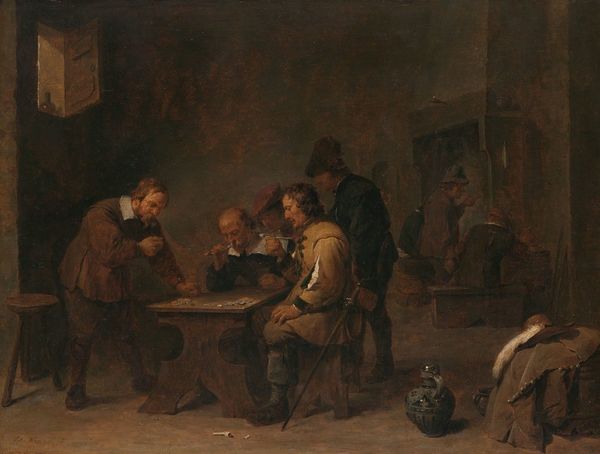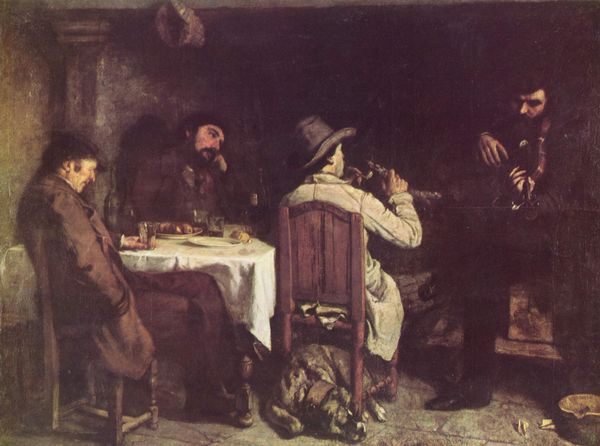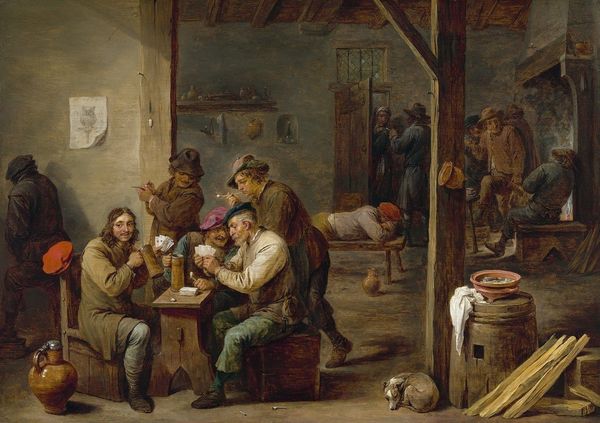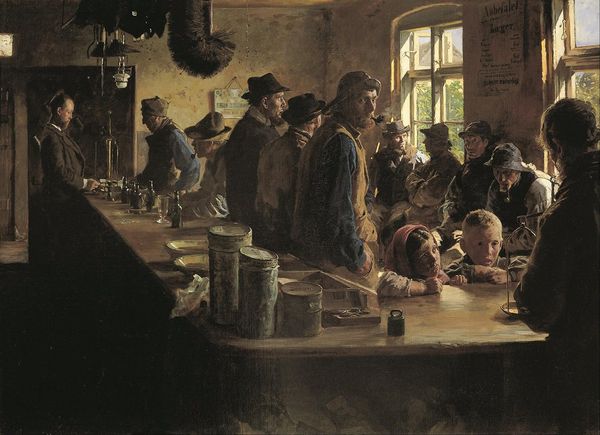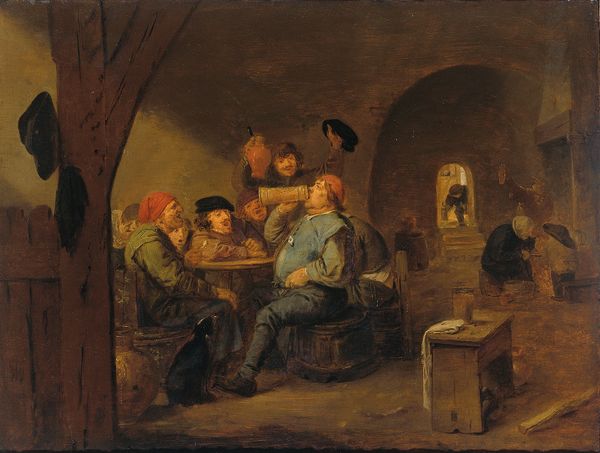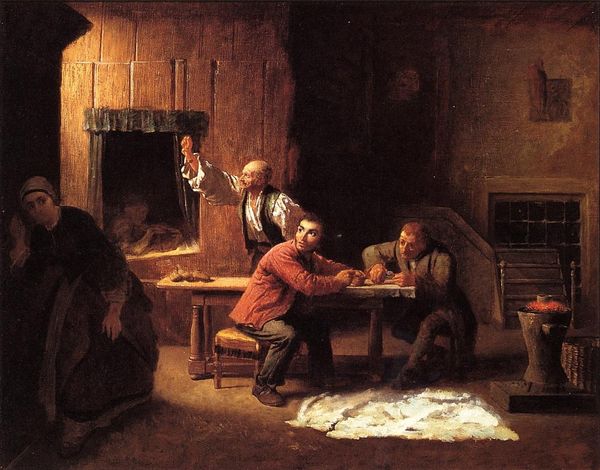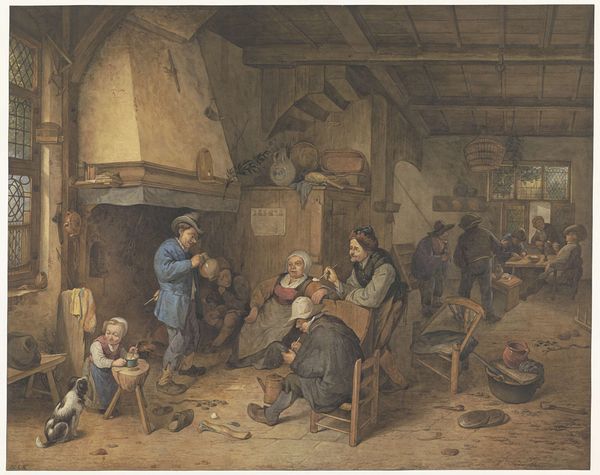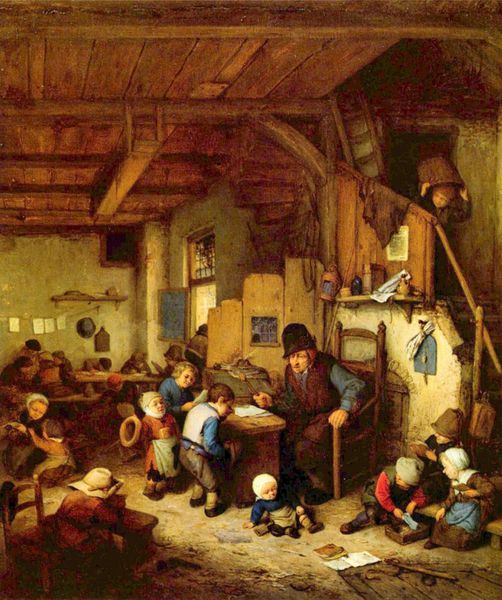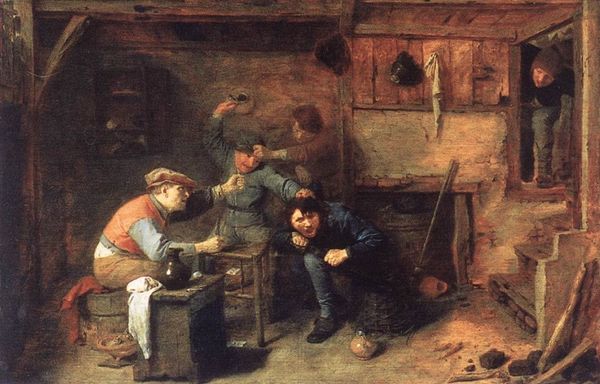
In the Forester's Hut 1887
0:00
0:00
vladimirmakovsky
Serpukhov Museum of History and Fine Arts, Serpukhov, Russia
Dimensions: 69 x 89 cm
Copyright: Public domain
Curator: Vladimir Makovsky's "In the Forester's Hut," painted in 1887, invites us into a surprisingly tense domestic scene. Editor: Oh, I feel a chill already. It's all moody shadows and hardscrabble living... Then there's that rifle. Bit of an uneasy party vibe. Curator: Indeed. Makovsky, a prominent figure in the Russian Realist movement, often depicted the lives of the lower classes. This genre painting offers insight into social dynamics within rural communities. Note how the figures cluster into distinct groups. Editor: Absolutely. You've got the rifle-wielding chap demonstrating… something? Then the weary woman by the oven, disconnected from the action, and the bourgeois gentlemen enjoying drinks at their table, with what appear to be playing cards scattered nearby. What a striking division. It seems the dog wants none of the shenanigans going on in this space. Curator: Precisely. The contrast between these individuals hints at class disparities and perhaps conflicting cultural values within this small space. The scene serves as social commentary, exploring tensions of class, education, and perhaps the disruption of traditional ways of life. Editor: There's almost a theatrical element, with everyone posed just so. And the tension is almost comical. I'm thinking there must be a tale, maybe a bet or competition? Who knows, it’s intriguing to let your imagination fill in the missing bits! The setting is a real testament to rural poverty but illuminated from its bleakness. Curator: A plausible reading. This approach is classic of Realism which attempts a slice of life rather than heroic history or idyllic pastoral scenes. One might question the painter's motivation for presenting this moment, however. To what extent does it offer sympathetic observation, and where might one identify implied critique? Editor: It really gets you thinking about that rifle's role. Is it for hunting, protecting, or just showing off? And why right in that moment of possible enjoyment of food and drink? Curator: Yes, there’s definitely something disruptive about the gun and its pointed barrel! I think it gives the whole composition a sense of immediacy and danger, cutting through what may be otherwise an ordinary evening with a quiet intensity. Editor: So, we leave the painting maybe more unsettled than before, with lingering questions about what will happen once that rifle goes off. I kind of love it! Curator: Yes, the painting's power lies in the questions it evokes, not the answers it provides.
Comments
No comments
Be the first to comment and join the conversation on the ultimate creative platform.
